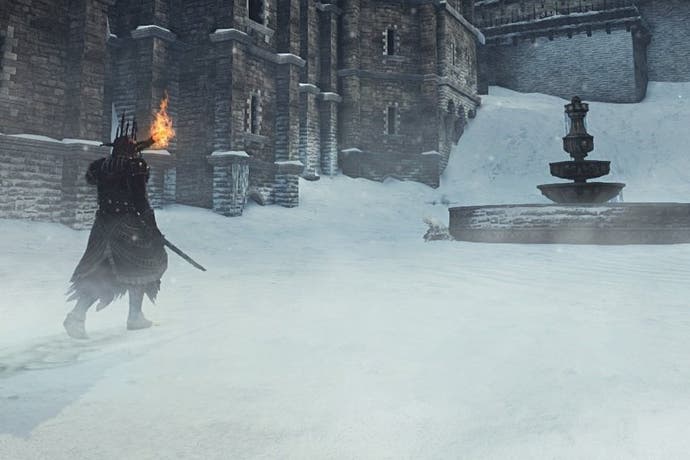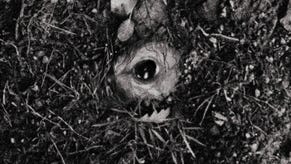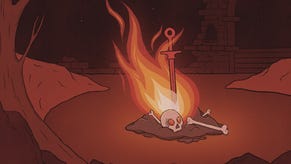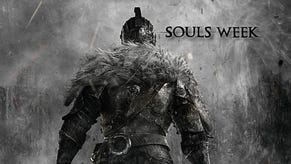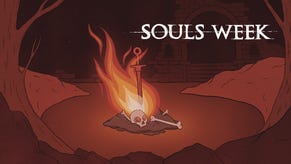Dark Souls 2: Crown of the Ivory King review
Final desperation.
So our journey through Drangleic reaches its triumphant conclusion. At least, that's what Dark Souls 2's narrator might say if the game's creators indulged in such plain speaking. As it is, this, the third and final bonus chapter to From Software's noble and opaque dark fantasy game, arrives with little fanfare and, while it concludes with arguably the series' most climactic battle, you're given only fragments of explanation for where you are, why you're here and with whom you are battling.
This is how overseer Hidetaki Miyazaki prefers things to be. As a child he would pick through English-language fantasy books, understanding only the odd snippet of text. As a result he'd create his own stories based on what he understood. He'd fill in the gaps with his own fabrications. Likewise, Dark Souls players must bring not only skill but also imagination to the game. How else can one piece together the whispered clues into a narrative: Who is the Ivory king? Why is his kingdom of Eleum Loyce locked in an interminable freeze? Why was he imprisoned within a vast cathedral and, pertinently, why should we free him?
By the end of this final chapter, Dark Souls 2 and its knotted lore will not have been fully untangled. But at least you will have answered the lesser question of what lurks inside the shrine hidden in the Shaded Woods.
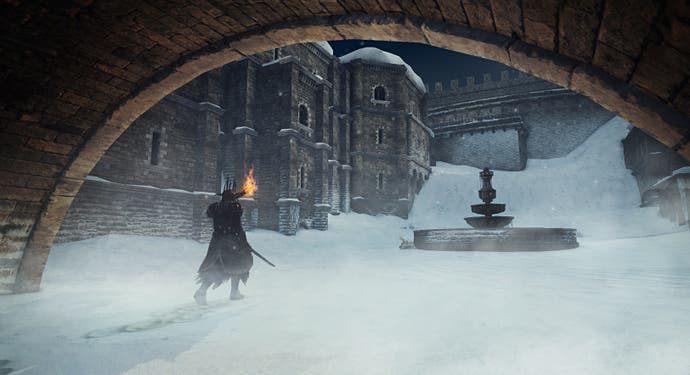
It whisks you to Eleum Loyce, a frozen kingdom where snow dust gathers on your armour as you battle various types of ice warrior (the plain six-foot fighters who can be easily parried; the larger brutes who have ice shard hunchbacks to prevent backstabs; the fearsome ice mages who teeter menacingly on icicle legs). In contrast to the previous two chapters, it's possible to blunder your way to the final boss fight almost immediately. Take a wrong turn after you enter the door to Eleum Loyce (which has been forced open by the growth of tree trunk, indicating just how long this place has been forgotten) and you'll enter the domain of the king's pet, a dramatic fight that's reminiscent of the memorable face-off with Dark Souls' wounded wolf, Sif. If, however, you arrive in this area before collecting an important item elsewhere in Eleum Loyce, the animal will be almost invisible. Neither will you be able to summon any warriors to provide support, making the fight almost impossible.
Take the other path available and instead you wend your way along Eleum Loyce's narrow pathways, which twist high above seemingly endless ice plains far below. Enemies here present the tallest challenge of the trilogy of downloadable chapters. They overwhelm in numbers and you'll need to bait and aggro knights one by one, else risk being attacked from all sides with a barrage of melee strikes and ranged attacks. The journey is especially challenging for characters with inadequate magic defence and some tweaks to your equipment are advisable. Ice engulfs much of the landscape, enveloping foes and chests. It's a neat touch of foreshadowing: later in the chapter, after you defeat the king's first pet and agree to 'free' the Ivory King, the landscape melts and the foes become active and the items accessible.

The chapter is, in many ways, a greatest hits of Dark Souls 2 rhythms and features: along the way you have the opportunity to look out across vast, forsaken vistas before you descend into dark caves filled with ugly monsters. There are Pharros lockstones to unlock, red glowing invaders that apparate into your game and pursue your character with relentless intent. There are invisible knights, phantom horses and rabid dogs. Eleum Loyce is, as with the best Dark Souls locations, a mechanism in and of itself, with long, demanding stretches of landscape that, once traversed, can be softened with a shortcut.
But the chapter is not without its own fresh ideas. The final battle, in which you are transported to a cathedral in a fiery nether realm, can be accessed relatively early on. It is, however, an extraordinarily demanding fight in which you are set upon by waves of towering knights who battle alongside the Ivory king himself. You are supposed to be bested here in order to force a retreat back into Eleum Loyce where there are three knights who can be recruited to the cause, and brought along for the final showdown. Investigating the city's various nooks in search of these warriors gives the chapter a unique pace and focus as you gather together a team and, when fully assembled, return to the Ivory King's throne room to finish the task. It's a fitting end to the game, one that upsets Dark Souls 2's now familiar structure, which almost always has you pressing forward, rarely to loop back or return to previous locations (as you more readily did in the first two games).
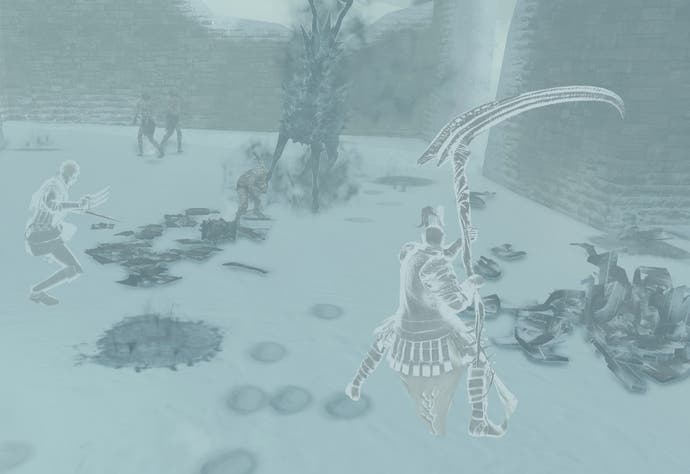
There is also an inherent tone of melancholy to Crown of the Ivory King, the sense of a thing ending, of closure, of finality - an unusual ambiance in a game that is founded upon unending resurrection. But now Dark Souls 2 is finally over, and with it a trilogy of games that have beaten a new and fresh path of ambition and design during the past five years. Celebrate its passing now, the indirect camaraderie of those messages scrawled into the ground, the polite bows and waves to other players that you summon to aid you against a particularly difficult fight, the thrill of discovery in a world where so little is explained and made explicit.
Enjoy the next few weeks, during which there will be a steady population touring through the chapter, seamlessly and thinly appearing in one another's games like ghosts in a dream. Soon, the people will have moved on: Eleum Loyce will return to ice and all but the small group of NPCs you gathered at Majula, the clifftop homestead that overlooks the endlessly rioting sea, will be gone. For many, 2014 has been the year of Dark Souls 2. And now, finally, the real Dark Souls ends here.
